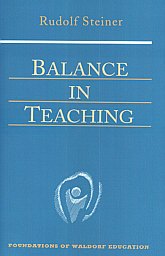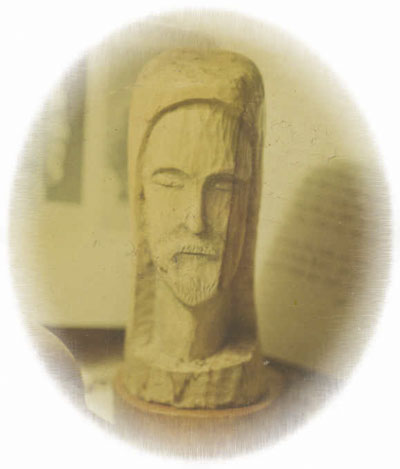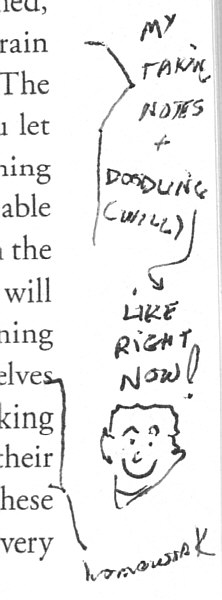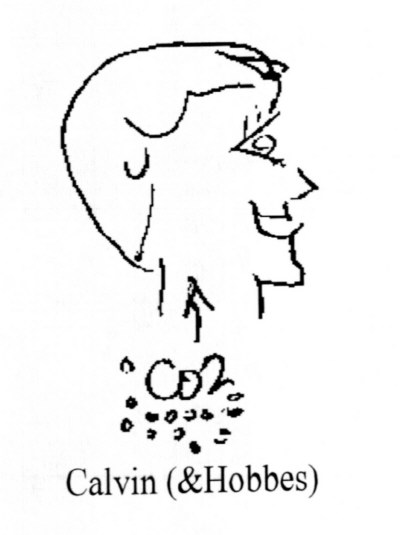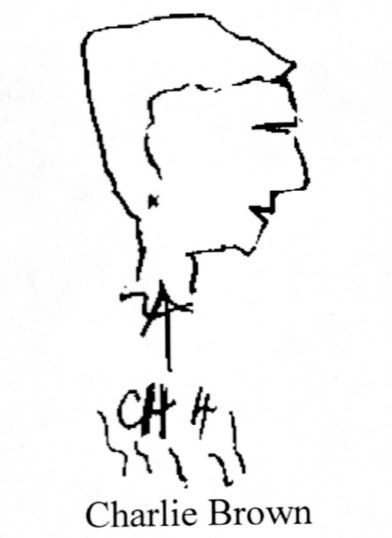RUDOLF STEINER'S LECTURES
and WRITINGS ON EDUCATION
LEGEND: (TBA) indicates this review to be added later.
Underlined Title indicates Available Review: Click on Link to Read Review.
(NA) indicates the Book is NOT in Print presently, so far as we know.
I. Allgemeine Menschenkunde als Grundlage der Pädagogik: Pädagogischer Grundkurs,
14 lectures, Stuttgart, 1919 (GA 293). Previously Study of Man.
The Foundations of Human Experience (Anthroposophic Press, 1996).
II. Erziehungskunst Methodische-Didaktisches, 14 lectures, Stuttgart, (GA 294). Practical Advice to Teachers (Anthroposophic Press, 2000).
III. Erziehungskunst, 15 discussions, Stuttgart, 1919 (GA 295). Discussions with Teachers (Anthroposophic Press, 1997).
IV. Die Erziehungsfrage als soziale Frage, 6 lectures, Dornach, 1919 (GA 296). Previously
Education as a Social Problem. Education as a Force for Social Change
(Anthroposophic Press, 1997).
V. Die Waldorf Schule und ihr Geist, 6 lectures, Stuttgart and Basel, 1919
(GA 297). The Spirit of the Waldorf School (Anthroposophic Press, 1995).
VI. Rudolf Steiner in der Waldorfschule, Vorträge und Ansprachen, 24 Lectures and conversations and one essay, Stuttgart, 1919-1924 (GA 298) Rudolf Steiner in the Waldorf School: Lectures and Conversations
(Anthroposophic Press, 1996).
VII. Geisteswissenschaftliche Sprachbetrachtungen, 6 lectures, Stuttgart, 1919
(GA 299). The Genius of Language (Anthroposophic Press, 1995).
VIII. Konferenzen mit den Lehrern der Freien Waldorfschule 1919-1924, 3 volumes
(GA 300a-c). Faculty Meetings with Rudolf Steiner, 2 volumes: Volume 1, Volume 2 (Anthroposophic Press, 1998).
IX. Die Erneuerung der pädagogisch-didaktischen Kunst durch Geisteswissenschaft,
14
lectures, Basel, 1920 (GA 301). The Renewal of Education (Anthroposophic Press, 2001).
X. Menschenerkenntnis und Unterrichtsgestaltung, 8 lectures, Stuttgart, 1921
(GA 302). Previously The Supplementary Course: Upper School and Waldorf Education
for Adolescence. Education for Adolescents (Anthroposophic Press, 1996).
XI. Erziehung und Unterricht aus Menschenerkenntnis, 9 lectures, Stuttgart, 1920, 1922,
1923 (GA 302a). The first four lectures are in Balance in Teaching (Mercury Press, 1982); last
three lectures in Deeper Insights into Education (Anthroposophic Press, 1988).
XII. Die gesunde Entwicklung des Menschenwesens, 16 lectures, Dornach, 1921-22
(GA 303). Soul Economy: Body, Soul, and Spirit in Waldorf Education (Anthroposophic Press, 2003).
XIII. Erziehungs- und Unterrichtsmethoden auf anthroposophischer Grundlage, 9 public lectures, various cities, 1921-22 (GA 304)
Waldorf Education and Anthroposophy 1 (Anthroposophic Press, 1995).
XIV. Anthroposophische Menschenkunde und Pädagogik, 9 public lectures, various cities,
1923-24 (GA 304a). Waldorf Education and Anthroposophy 2 (Anthroposophic Press, 1996).
XV. Die geistigseelischen Grundkräfte der Erziehungskunst, 12 Lectures, 1 special lecture,
Oxford, 1922 (GA 305). The Spiritual Ground of Education (Anthroposophic Press, 2004).
XVI. Die pädagogische Praxis vom Gesichtspunkte geisteswissenschaftlicher
Menschenerkenntnis, 8 lectures, Dornach, 1923 (GA 306) The Child's Changing Consciousness as the Basis of Pedagogical Practice (Anthroposophic Press, 1996).
XVII. Gegenwärtiges Geistesleben und Erziehung, 14 lectures, Ilkley, 1923
(GA 307) Two Titles: A Modern Art of Education (Anthroposophic Press, 2004) and
Education and Modern Spiritual Life (Garber Publications, 1989).
XVIII. Die Methodik des Lehrens und die Lebensbedingungen des Erziehens, 5 lectures,
Stuttgart, 1924 (GA 308). The Essentials of Education (Anthroposophic Press, 1997).
XIX. Anthroposophische Pädagogik und ihre Voraussetzungen, 5 lectures,
Bern, 1924 (GA 309) The Roots of Education (Anthroposophic Press, 1997).
XX. Der pädagogische Wert der Menschenerkenntnis und der Kulturwert der Pädagogik, 10 public lectures, Arnheim, 1924 (GA 310) Human Values in Education(Rudolf Steiner Press, 1971).
XXI. Die Kunst des Erziehens aus dem Erfassen der Menschenwesenheit, 7 lectures, Torquay,
1924 (GA 311). The Kingdom of Childhood (Anthroposophic Press, 1995).
XXII. Geisteswissenschaftliche Impulse zur Entwicklung der Physik. Erster
naturwissenschaftliche Kurs: Licht, Farbe, Ton — Masse, Elektrizität, Magnetismus
10 lectures, Stuttgart, 1919-20 (GA 320). The Light Course (Anthroposophic Press, 2001).
XXIII. (NA) Geisteswissenschaftliche Impulse zur Entwicklung der Physik. Zweiter
naturwissenschaftliche Kurs: die Wärme auf der Grenze positiver und negativer Materialität, 14
lectures, Stuttgart, 1920 (GA 321). The Warmth Course (Mercury Press, 1988). This Mercury Press edition may still be in print.
XXIV. (NA) Das Verhältnis der verschiedenen naturwissenschaftlichen Gebiete zur Astronomie.
Dritter naturwissenschaftliche Kurs: Himmelskunde in Beziehung zum Menschen und zur
Menschenkunde, 18 lectures, Stuttgart, 1921 (GA 323). Available in typescript only as "The
Relation of the Diverse Branches of Natural Science to Astronomy."
XXV. Six Lectures in Berlin, Cologne, and Nuremberg from 1906 to 1911, (Misc. GA's.)
The Education of the Child — Early Lectures on Education (a collection; Anthroposophic Press, 1996).
XXVI. Miscellaneous.

